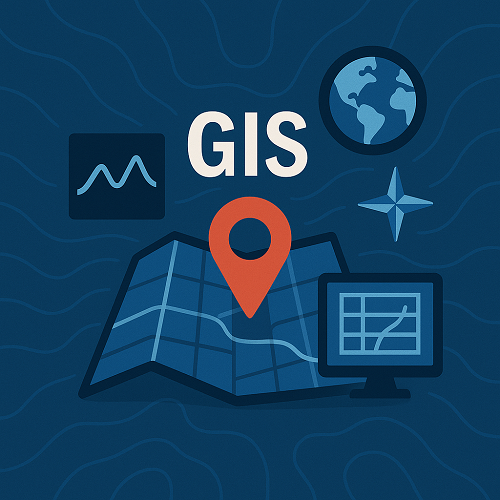TL;DR
- AI and IoT are transforming GIS into real-time, predictive decision platforms.
- Improved data visualization tools enable smarter urban planning and resource management.
- Integration with big data platforms enhances performance and scalability.
- GIS is becoming essential for sustainability and smart city initiatives.
- Organizations benefit from automation, precise data processing, and faster insights.
What’s new right now
Geospatial Information Systems (GIS) are undergoing rapid transformation. The latest advancements emphasize real-time analytics powered by artificial intelligence (AI) and the Internet of Things (IoT). These capabilities enable continuous data collection from sensors, drones, and satellites, dramatically improving situational awareness. According to Esri, modern GIS platforms now integrate smart technology and predictive analytics to optimize urban infrastructure and environmental monitoring.
Additionally, cloud-based GIS tools offer enhanced scalability and collaborative mapping solutions. Real-time data streaming from IoT devices helps public agencies monitor water resources and traffic patterns instantly, as reported by Geospatial World. These trends illustrate how GIS in 2025 is not just about maps—it’s about dynamic decision ecosystems fueled by integrated technologies.
Why it matters
For businesses, GIS now delivers far more than visual data overlays. It delivers spatial intelligence that drives investment and sustainability decisions. Corporations use GIS to reduce operational costs by targeting precise assets and optimizing resource use. For governments and urban planners, real-time GIS data supports informed policy-making for traffic control and resilience planning against climate risks.
Technically, the convergence of AI, IoT, and big data with GIS means analysts can process complex spatial datasets with automation. This results in improved forecasting, efficient routing, and better management of natural resources.
Deep Dive: Transformational Trends in GIS
AI-Powered Analysis
Artificial intelligence within GIS introduces predictive analytics and automated spatial pattern recognition. Machine learning models detect anomalies such as deforestation or construction changes immediately, reducing time spent on manual surveys.
IoT Integration
IoT sensors now feed directly into GIS databases, offering live status updates on assets like pipelines and vehicles. This data improves both public safety and environmental monitoring practices.
Cloud Scalability
Modern GIS deployments on cloud platforms help organizations scale resources and collaborate globally. For instance, cloud architecture supports remote GIS visualization and rapid model deployment without hardware dependence.
Comparison of Emerging GIS Approaches
| Aspect | Traditional GIS | AI & IoT-enhanced GIS |
|---|---|---|
| Data Updates | Manual and periodic | Real-time, automated streaming |
| Decision Making | Static maps and reports | Dynamic predictive modeling |
| User Collaboration | Limited sharing | Cloud-based multi-user environments |
| Performance | Local, slower computation | High-speed analytics with distributed processing |
| Scalability | Hardware-dependent expansion | Elastic through cloud infrastructure |
Mini Case Study: Smart Water Resource Management
Problem: A regional water authority struggled with unpredictable drought patterns and inefficient resource allocation.
Approach: The authority adopted an AI-integrated GIS platform connected with IoT sensors in reservoirs and riverbeds. These sensors provided continuous water-level updates, which were processed in real time to detect shortages and predict demand surges.
Outcome: Within six months, the authority achieved a 20% reduction in water waste and responded to drought conditions 40% faster than before. Data insights informed proactive infrastructure maintenance and improved community water distribution plans.
Implementation Checklist
- Define primary spatial challenges and strategic objectives.
- Assess data sources and compatibility with GIS systems.
- Select a scalable GIS platform supporting AI or IoT integration.
- Develop real-time data pipelines using trusted sensor networks.
- Train staff in spatial data interpretation and model configuration.
- Establish security protocols and regular system updates.
- Evaluate outcomes through measurable KPIs like efficiency gains or accuracy improvements.
FAQs
1. What industries benefit most from the new GIS technologies?
Urban planning, logistics, environmental management, and utilities experience the biggest impact due to real-time asset monitoring and predictive analysis capabilities.
2. How does AI improve GIS performance?
AI automates data cleaning, object detection, and pattern learning, allowing systems to produce accurate spatial forecasts faster than manual analysis.
3. Is IoT integration complex?
Modern cloud GIS solutions simplify IoT integration through standardized data APIs, making deployment faster and easier.
4. What data security concerns exist?
Since GIS connects multiple data sources, encryption and access control measures are essential, especially when dealing with critical infrastructure or proprietary data.
5. What skills do GIS analysts need in 2025?
Knowledge of spatial analytics, AI/ML concepts, data visualization tools, and cloud computing frameworks is increasingly important for competitive GIS professionals.
6. Are real-time GIS applications expensive?
While initial costs may be higher, organizations typically recover investments through efficiency gains and reduced resource waste within months.
Conclusion
GIS technology in 2025 stands at the intersection of spatial data intelligence, automation, and sustainable innovation. As AI and IoT continue shaping global data ecosystems, forward-looking organizations are leveraging GIS to visualize, predict, and manage change efficiently. To discover how your business can benefit from smart mapping integration, explore our GIS services today.
